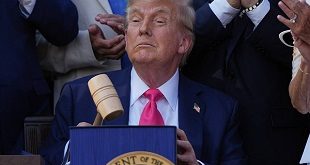
At the centre of energy poverty is distance (number of people in the rural and peri-urban townships living off grid and under the grid), price (more than 600 million people live below poverty line with cash flow challenges), infrastructure (prohibitive transport costs, readiness of intermediaries for ease of payments – for especially PayGo and logistical challenges to reach last mile customer).
The Agency for Transformation strongly believes that filling global clean energy access gap requires not a particular re-invention of new ideas but rather re-imagination and tweak of conventional and old ideas.
Also at the centre of energy poverty is technology (improvements positively affecting pricing and access), dirty alternatives (kerosene, firewood, charcoal, candles) and political complexity (cost of unfriendly and un-harmonised off-grid regulations and policies e.g. regressive tax codes, absence of harmonised codes for e.g Solar Home systems ).
In the midst of the foregoing, 840 million people globally are un-electrified, with attendant energy poverty challenges like pollution, disease, illiteracy, insecurity among others. To this extent, what is clear and apparent is that increased access to energy begins with affordability.
The Agency for Transformation strongly believes that filling global clean energy access gap requires not a particular re-invention of new ideas but rather re-imagination and tweak of conventional and old ideas. One particular idea though contested in some quarters, is targeted subsidies.
The tweak and logic of the Agency for Transformation’s approach is that they need not to just subsidize but rather subsidize smartly. A smart off-grid clean energy subsidy is only smart if executed in a time-limited (approximately 4 years), rule-bound (fair competition space and aligned standards) and deployed with a laser focus to produce demonstrable social and economic impacts and such impacts should be measured using rigorous statistical analyses.
A smart subsidy is only smart if it’s inclusive and offsets immediate costs by participating firms and have savings passed on directly to the end consumer in proportionate lower pricing of energy product (e.g. Solar Home System). A smart subsidy in Agency for Transformation’s approach is therefore a price concession to end user (customer) which facilitates scale and drives affordability in the long term. The foregoing provides a counterpoint to dominant tendencies and narratives around market distortions and sustainability challenges in the long history of subsidy markets – especially for Solar Home Systems.
Recasting the global off-grid clean energy gap crisis.
The Global Off-grid Lighting Association (GOGLA) argues that solar products and services are a solution for the estimated 1 billion people with weak grid connections globally.

The 2019 Energy Progress report tracking Sustainable Development Goal 7 argues that the world is making progress but will fall short of meeting the targets by 2030 at the current rate of ambition.
The Report documents that the global population without access to electricity decreased to about 840 million in 2017 from 1.2 billion in 2010.
Sub-Saharan Africa remains the region with the largest access deficit: here, 573 million people—more than one in two—lack access to electricity
Sub-Saharan Africa remains the region with the largest access deficit: here, 573 million people—more than one in two—lack access to electricity. The region is also home to the 20 countries with the lowest electrification rates (figure ES3). Burundi, Chad, Malawi, the Democratic Republic of Congo, and Niger were the four countries with the lowest electrification rates in 2017.
The deficit is even more pronounced in rural areas. In fact, the unserved rural population of 732 million represented 87% of the global access deficit in 2017. In Sub-Saharan Africa, there was greater attention to urban electrification. Here, the incremental rural electrification of 16 million people a year was two-thirds that of the urban rate in 2015-2017.
 The Independent Uganda: You get the Truth we Pay the Price
The Independent Uganda: You get the Truth we Pay the Price





